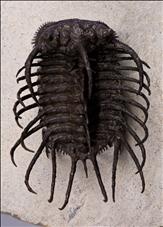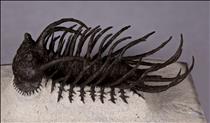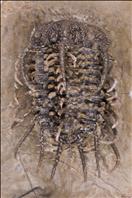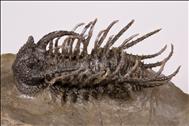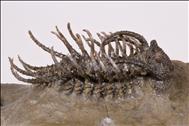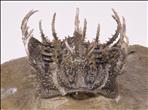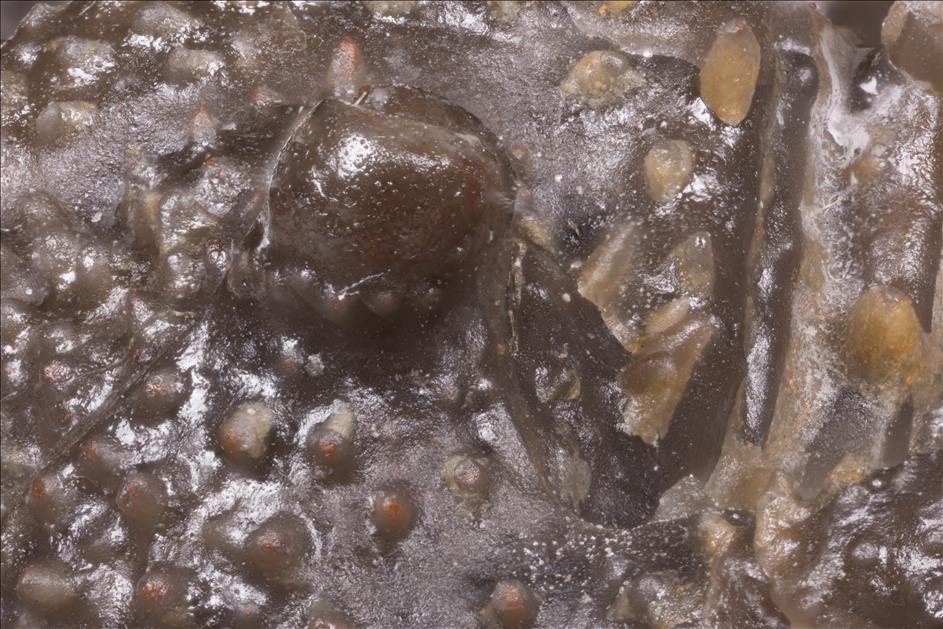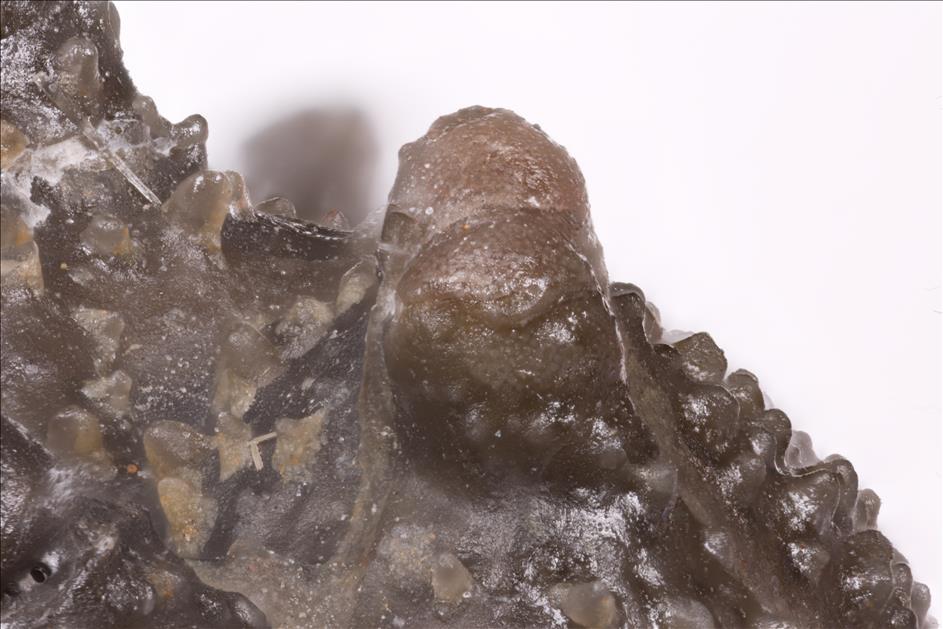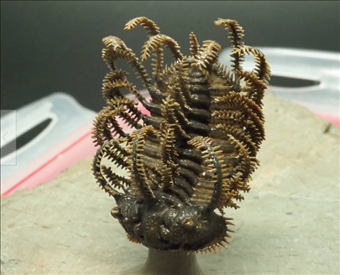This species of Koneprusia has a double pair of spines in the center of the thorax for the first two thoracic segments, and then a single center spine on each of the remaining thoracic segments aside from the last.
I have two specimens of Konepusua dahmani that nicely illustrate the difference between competent preparation and outstanding preparation.
The first specimen, shown in the first two photographs, has all major spines freed from the matrix and has typical quality modern day preparation.
The second specimen is shown in the next six photographs. Note all the bumps and fine spines that are usually air abraded away. This specimen was prepped by the best preparator in Morocco. This type of prep requires a very fine abrasive and low air pressure, and takes much longer than conventional prep.
The right eye in the higher quality specimen is pathological -- there appear to be two "eyeballs" rather than one. This looks like the result of the most recent molt not going quite right, so the optical surface of the earlier shell got retained along with the optical surface of the new shell. The lenses of the holochroal eyes are visible in the higher quality specimen, most clearly in the lower "eyeball" of the right eye and in the lower portion of the left eye. This is the only Odontopleurid I own where the lenses of the eyes are visible.
The last specimen is not one I own but was offered on Ebay at a very high price. I do not believe for one moment that the spines on spines of this specimen are real, although it no doubt took some real skill to attach all those small spines to the spines of a conventionally prepped Koneprusia. Note that the head looks much more like the conventionally prepared head of the first specimen than like the very detailed head on the second specimen. With fossils it's buyer beware.
